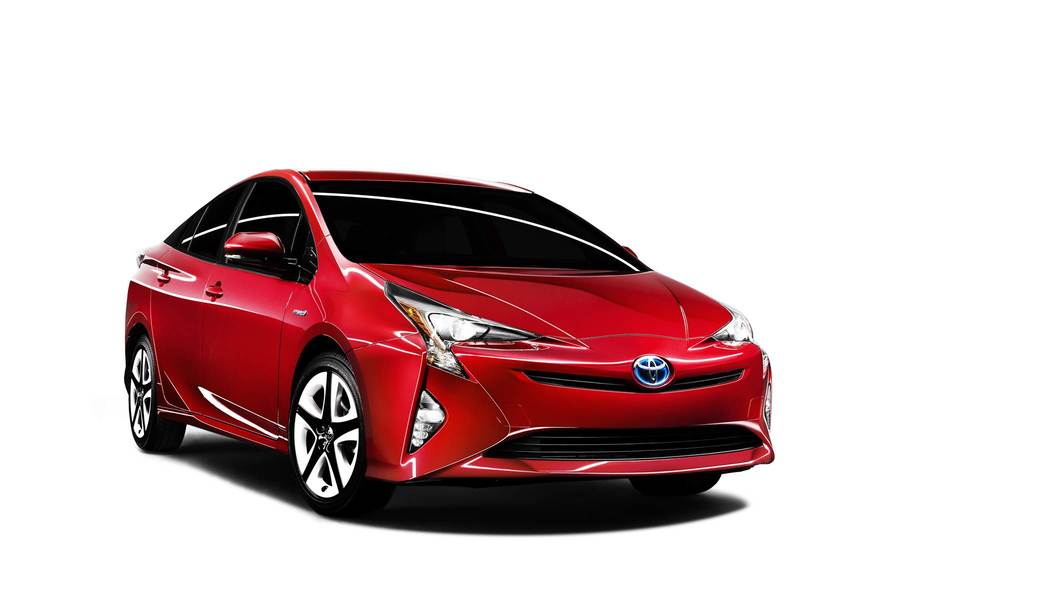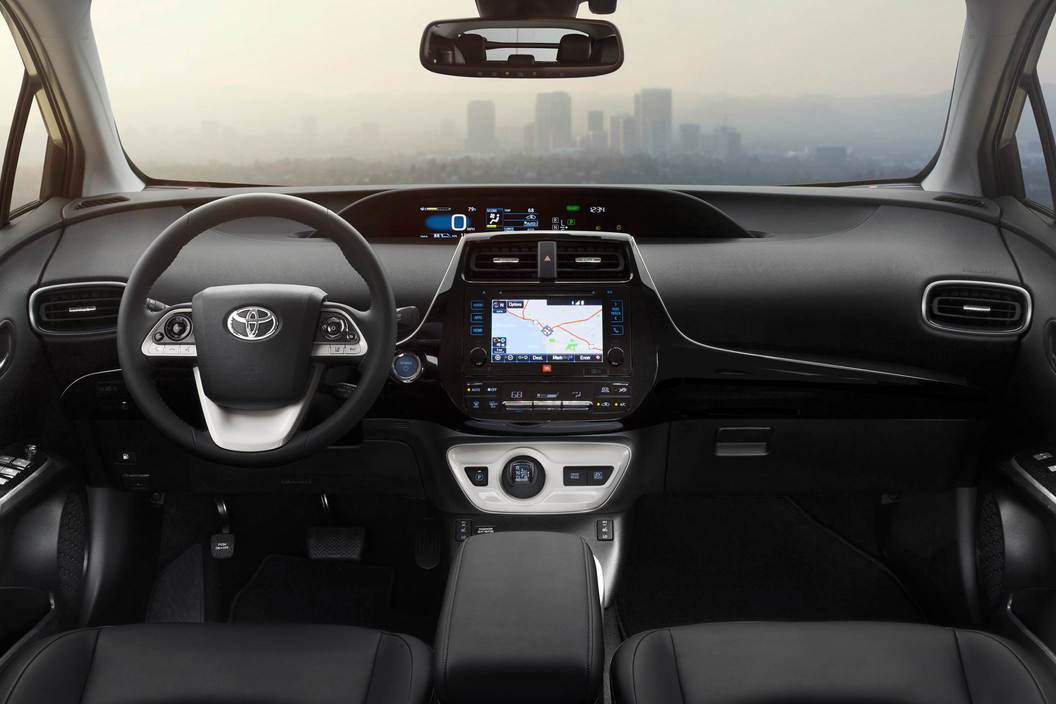The Toyota Prius may not be the most exciting car in the world, but it’s without a doubt an important one. Introduced in Japan in 1997, the hybrid has sold more than 3.5 million units globally, and has undoubtedly shaped the world’s perspective of fuel efficient and alternative energy vehicles.
The fourth-generation model has just been unveiled to a group of journalists in Las Vegas, Nevada, and the car is without a doubt the most ambitious version yet from a styling standpoint. The aesthetics were clearly inspired by the brand’s hydrogen-fueled Mirai, as the ultra-modern rear end features a similar taillight design that points sharply toward the ground. The themes are present up front as well, as the 2016 Prius wears a jumble of precise angles, cut lines, and eye-catching LED headlamps, making sure the new version doesn’t get lost in the crowd.
Underneath the modern skin lies an all-new platform, the first example of Toyota’s New Global Architecture. The car is 2.4 inches longer, 0.6 inches wider, and 0.8 inches lower than the previous model, changes that the brand says result in more interior space and improved cargo room. The lower center of gravity and rear double wishbone suspension equate to enhanced driving dynamics as well, which is great news for the thousands of people that will be driving this car come its arrival early next year.
Many of the technical specifics are still under wraps, but Toyota promises more efficient hybrid components, higher battery density, and a new internal combustion engine that boasts a thermal efficiency rating of more than forty percent. In layman’s terms, that means it utilizes the energy made from burning fuel much more efficiently than other gas engines, which equates to a ten-percent improvement in fuel economy over the 2015 Prius. Considering the current variant is rated at 51 mpg and 48 mpg highway, the new hybrid should sniff 56 mpg in the city and 52 mpg on the highway.
For those holding out for even more savings at the pump, there is good news — a new Eco model is scheduled to be unveiled soon. Details are forthcoming, but the manufacturer promises the new Prius will offer best-in-class fuel economy among vehicles without a plug.
One of the major drawbacks of the 2015 Prius was its relatively low-rent interior, but thankfully it’s been much improved with this car. The cabin has been noticeably decluttered and upscaled — the infotainment system in particular — and metallic trim pieces have taken over for the cheap-looking plastic that littered the old car’s innards.
Toyota has always been a proponent of safety in its vehicles, and the bold hybrid you see above is the latest example of that. Not only is the new platform more rigid than its antecedent, the vehicle will be among the first U.S. models to offer the Toyota Safety Sense (TSS) suite. TSS includes a Pre-Collision System with Pedestrian Detection, Lane Departure Alert with Steering Assist, Full-Speed Dynamic Radar Cruise Control, and Automatic High Beams.
The Prius is a big deal for Toyota, so keep it locked on DT Cars for more information about new variants (plug-in hybrid, anyone?), equipment (did someone say optional all-wheel drive?), and pricing specifications. When we know, you’ll know.



